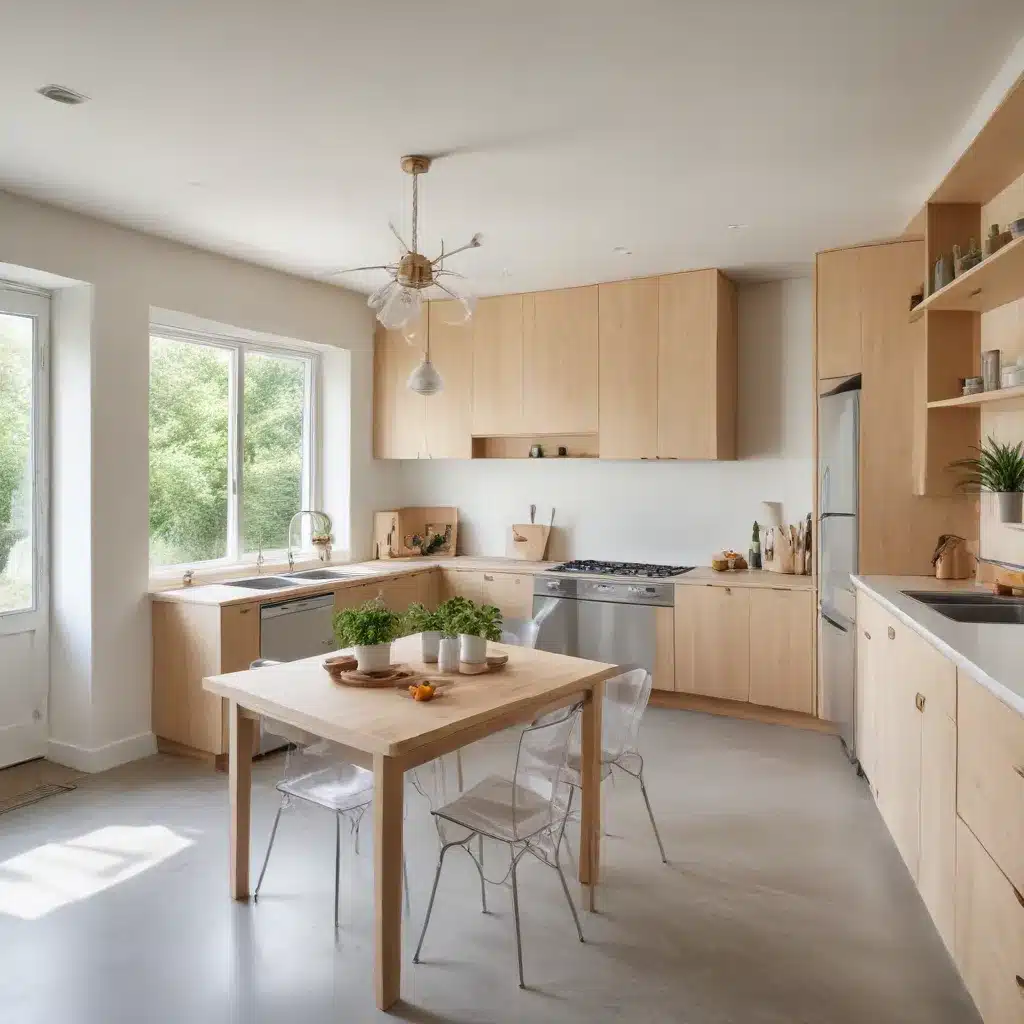
Sustainable Remodeling: Eco-Friendly Materials and Methods
As an experienced home improvement consultant, I’ve seen the construction industry’s growing emphasis on sustainability. Homeowners and contractors alike are increasingly seeking out eco-friendly building materials and green construction techniques to reduce the environmental impact of remodeling projects. In this comprehensive guide for Reluctant Renovator, I’ll explore a wide range of sustainable solutions to transform your living space while protecting the planet.
Sustainable Building Materials
The foundation of any sustainable remodel lies in the materials used. Thankfully, there’s a wealth of renewable, recycled, and energy-efficient alternatives that can be just as beautiful and functional as traditional options.
Renewable Resources
Bamboo is a standout material, thanks to its rapid growth rate of up to 1.5 inches per day. This flexible, high-strength grass is an abundant, sustainable choice for flooring, cabinetry, and even structural framing. Cork, harvested from the bark of cork oak trees, is another renewable wonder. Lightweight, waterproof, and naturally fire-resistant, cork excels as insulation and decorative paneling.
Hempcrete, a concrete-like material made from hemp fiber and lime, is a true carbon-negative marvel. Unlike traditional concrete, hempcrete actually absorbs carbon dioxide over its lifetime. It also boasts impressive thermal and acoustic insulation properties. Mycelium, the root-like structure of fungi, can be grown into sturdy, water-resistant building blocks, with exciting potential in the realm of sustainable construction.
Recycled and Repurposed Materials
Recycled materials are increasingly finding their way into home renovations. Reclaimed wood, for instance, not only exudes rustic charm but also reduces timber harvesting. Precast concrete, manufactured off-site, minimizes waste and emissions compared to traditional poured-in-place concrete. Recycled plastic can be transformed into versatile building products, from sheets and bricks to lumber and pipes.
Even steel, a construction mainstay, offers a sustainable edge when sourced from recycled stock. And terrazzo, a composite material incorporating recycled glass, marble, and other aggregates, brings unique and durable flooring options.
Energy-Efficient Alternatives
Beyond renewable and recycled materials, there are also energy-efficient building products that can significantly enhance a home’s environmental performance. Insulated Concrete Forms (ICFs), for example, combine the thermal mass of concrete with the insulating properties of rigid foam, delivering exceptional insulation and resilience against natural disasters.
High-performance windows and doors with superior sealing and insulation properties are another crucial component of energy-efficient remodeling, helping to minimize heat transfer and reduce utility bills.
Eco-Friendly Construction Techniques
Sustainable building materials are just one piece of the puzzle. The construction methods employed during a remodel can also have a substantial impact on a project’s environmental footprint.
Passive Design Strategies
Passive solar design, which harnesses the sun’s natural warmth and light, can dramatically reduce a home’s energy needs. By strategically placing windows, using thermal mass materials, and optimizing insulation, passive design helps regulate indoor temperatures and minimize the reliance on artificial heating and cooling.
Minimizing Waste and Emissions
Sustainable construction techniques also focus on reducing waste and emissions. Modular, prefabricated building components, such as those offered by Temporary Wall Systems (TWS), can be easily assembled and reconfigured, minimizing construction waste. On-site waste management and recycling programs further divert materials from landfills.
Green Building Certifications
To ensure a comprehensive approach to sustainability, many homeowners and contractors turn to green building certification programs like LEED (Leadership in Energy and Environmental Design). These rigorous standards provide a roadmap for integrating energy efficiency, water conservation, indoor air quality, and other eco-friendly features into a remodel.
Renewable Energy Integration
In addition to sustainable materials and construction methods, incorporating renewable energy solutions can help transform a remodeled home into a true eco-friendly oasis.
Solar Power Solutions
Solar panels have become increasingly affordable and accessible, allowing homeowners to generate their own clean electricity and reduce reliance on the grid. When paired with energy storage systems, solar power can also provide backup power during outages, enhancing the home’s resilience.
Wind and Geothermal Options
While solar is a popular choice, homeowners may also explore wind turbines or geothermal heat pumps to harness renewable energy sources specific to their location and climate. These technologies can further diversify a home’s sustainable energy portfolio.
Smart Home Technologies
Integrating smart home automation and energy management systems can optimize a home’s renewable energy use, heating, cooling, and overall efficiency. By automating lighting, appliances, and climate control, these systems help homeowners maximize their energy savings and environmental impact.
Remodeling for Energy Efficiency
Even if a comprehensive renewable energy system isn’t feasible, there are numerous ways to improve a home’s energy efficiency through strategic remodeling.
Insulation and Air Sealing
Ensuring proper insulation and air sealing in walls, attics, and crawl spaces is a fundamental step in reducing a home’s energy consumption. Materials like spray foam and blown-in cellulose can dramatically improve a building’s thermal performance and airtightness.
High-Performance Windows and Doors
Upgrading to energy-efficient windows and doors with superior R-values (a measure of thermal resistance) and low-E coatings can further enhance a home’s thermal envelope, preventing unwanted heat transfer.
Efficient Heating and Cooling Systems
Investing in high-efficiency HVAC equipment, such as heat pumps and ductless mini-splits, can significantly reduce a home’s energy use for heating and cooling. These systems are designed to maximize comfort while minimizing environmental impact.
As an experienced home improvement consultant, I hope this comprehensive guide has inspired you to embrace sustainable remodeling strategies for your next project. By thoughtfully selecting eco-friendly materials, employing green construction techniques, and integrating renewable energy solutions, you can transform your living space into a true oasis of sustainability. For more information and inspiration, be sure to visit https://www.reluctantrenovator.com.



